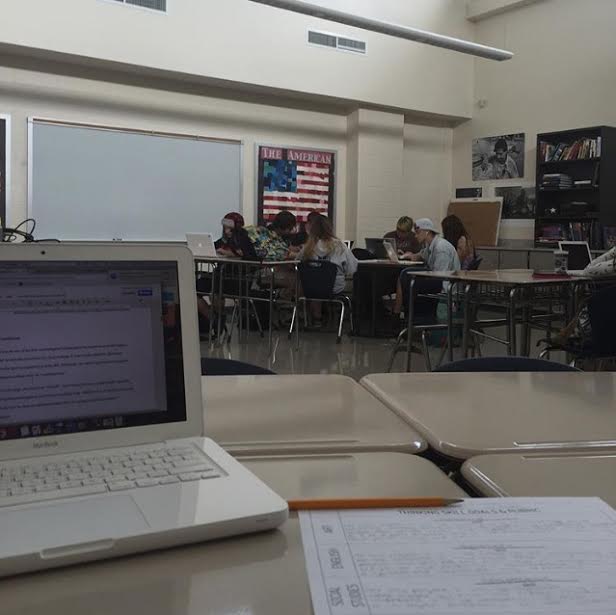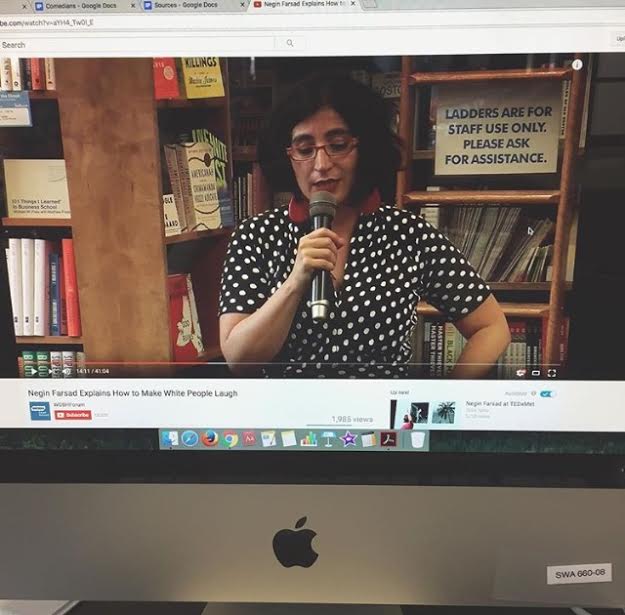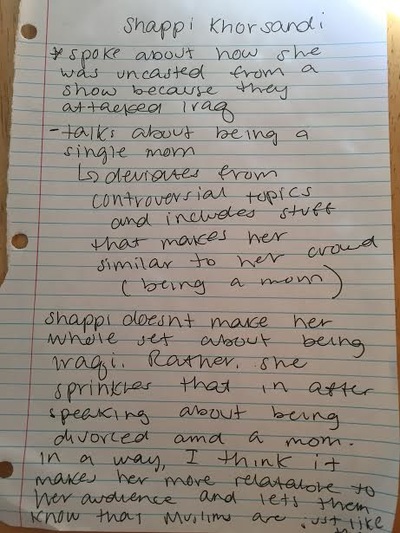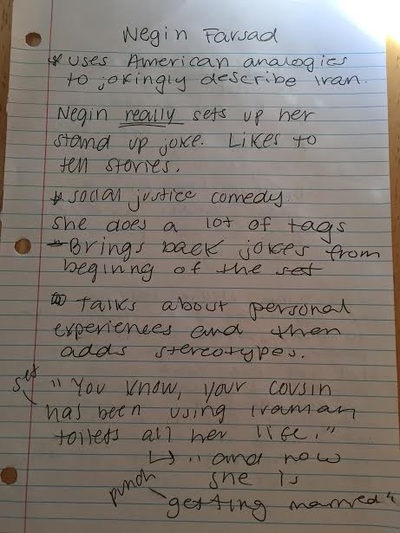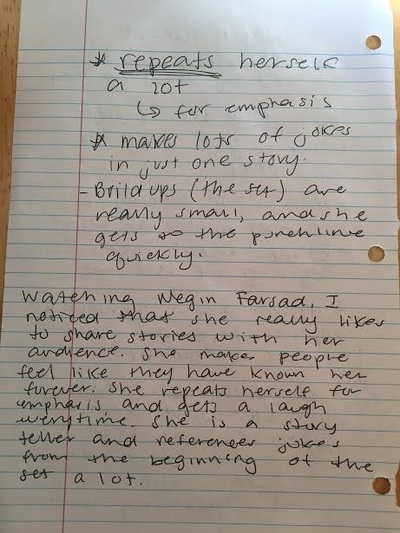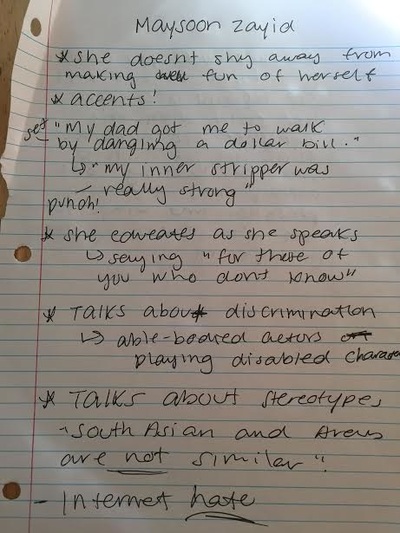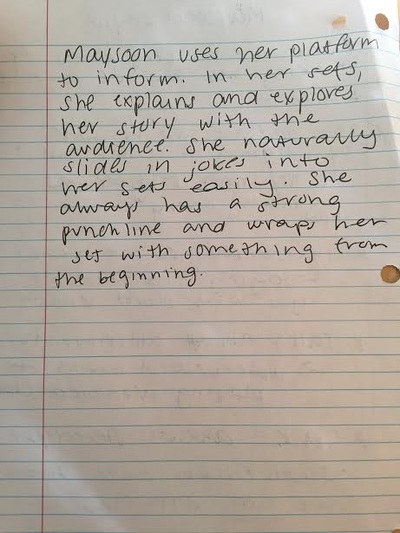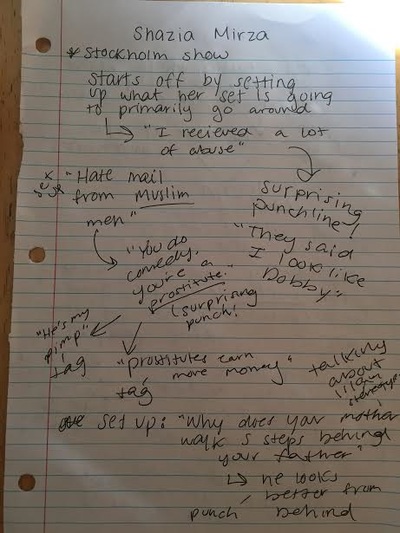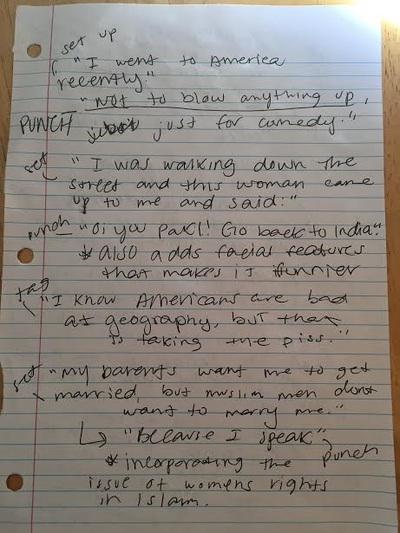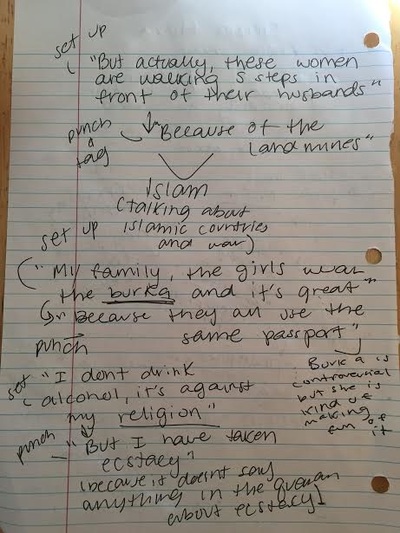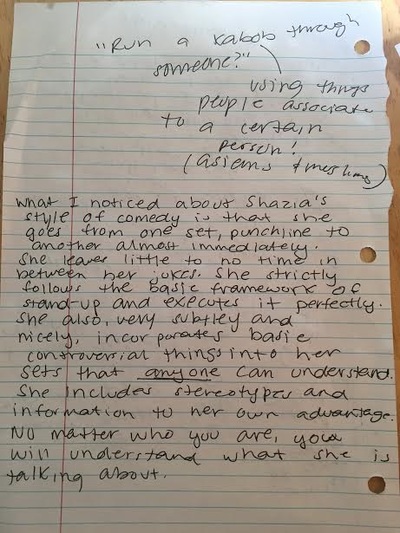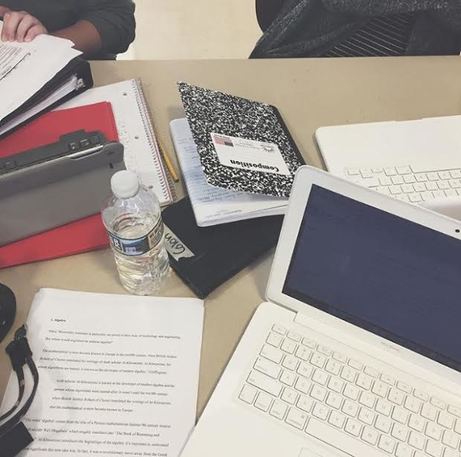Comedy is beautifully accepting of everyone. No matter where you come from or what you look like, as long as you can make others laugh you can be anything. That's why comedy is important and how I want to spread my message.
Shows like "Last Week Tonight with John Oliver" and "The Daily Show" aren't written 20 minutes before they air.
Every show or video that takes a stand with a political message has been thoroughly thought about and the writers usually have hours of research to back up any claim they make in the video.
So, it's time for me to do my share of note-taking and researching!
HistorySince my whole project has been revolved around researching, it's no wonder that my history portion is as huge as it is.
For this project, I researched and found 15 different Muslim inventions that we couldn't live without. These were my findings: 1. Algebra
|
system became known in Europe.
2. Toothbrush
Imagine not getting to listen to your favorite tunes (or, really, not having any tunes!) or drinking your morning coffee. Life would be barbaric, would it not?
After researching all of these, I researched the inventors to further acknowledge that my information is correct. Once I did, there was no room to debate my findings!
2. Toothbrush
- Although ancient Egyptians are thought to have first chewed on twigs for dental hygiene, also known as “miswak”, the practice and use only became known to a wider public when Prophet Mohammed regularly used them. While there is no mention of this in the Qur’an, many Muslim scholars have mentioned this in their writings.
- Military marching bands date back during the wars with the Ottoman Empire. These bands, called Mehterhane, played during the entire battle, only stopping when the army retreated or the battle was over. The Ottoman Mehterhane is thought to have made a huge impression on the European soldiers, as they adapted the principle for their own use.
- It’s said that the guitar, as we know it today, has its origins in the Arabic oud (a lute with a bent neck) when a ninth century music teacher brought one to the court of the Umayyad ruler Abdel Rahman II. When it found its way to Muslim Spain during the Middle Ages, it was referred to as “qitara” in the Arabic Andalusia.
- Along with revolutionizing mathematics, the Arab world revolutionized optics. Basra scholar, Alhazen (Abu al-Hasan) was the first person to describe how the eye works.
- The best known invention of the Muslim world’s exports is coffee. Originating in Ethiopia, it found its way to the Arabian peninsula and grew in popularity.
- The first modern hospital with nurses and a training centre was established in 872 in Cairo. In the Ahmed Ibn Tulun hospital (it was named for the founder of the Tulunid dynasty), all patients received free health care. This is a Muslim tradition which was institutionalized with the advent of the hospital.
- 10th century Andalusian-born doctor Albucasis (Abu al-Kasim) was one of the most significant medical figures of the Middle Ages. In more than 30 volumes, the scholar described how important a positive patient-doctor relationship is. He also argued that everyone, regardless of social class, should have the same standard of medical care.
- 9th century Muslim artists (al-Kindi in particular) used musical notation: the system of writing down music. They named the notes of the musical scale with syllables called solmization instead of letters. The syllables make up the basic scale we use in music today: with doh, ray, me, fa, so, la, tee. There is a phonetic similarity between this and the Arabic alphabet used in the 9th century: Dal, Ra, Mim, Fa, Sad, Lam, Sin.
- 7th century Muslims began to leave their homes for trade and religious reasons. They gathered knowledge of new places and when they returned they gave accounts of the routes they had taken, the people they had seen, and the sights they had encountered.
- The first person to make a real attempt to construct a flying machine that could actually fly was 9th century Muslim Abbas ibn Firnas. He designed a winged apparatus that resembled a bird costume that would become an inspiration six hundred years later for famous Italian artist and inventor, Leonardo da Vinci.
- Fatima al-Fihri started a learning centre in the Fez community. Like many grand mosques, al-Qarawiyin (the learning centre) became a place for religious instruction and political discussion. Gradually, the centre extended its curriculum and included all subjects, particularly the natural sciences, which then helped the centre earn its name as one of the first universities in history.
- In the 10th century Islamic world, products found in bathroom cabinets and hygiene practices could rival what we have today. 13th century engineer al-Jazari wrote a book describing mechanical devices, which included “wudhu” machines. Because Muslims wanted to be clean and not just splash themselves with water, they made soap by mixing oil (usually olive) with a salt-like substance called “al-qali”.
- Ibn al-Haitham revolutionized optics by taking a subject that is being discussed philosophically and taking it to an actual science based experiment. He created the world’s first camera obscura (which he called “qamara”) in a dark room with a pinhole on one side and a white sheet on the other.
- Muslim engineer al-Jazari in Southeast Turkey gave birth to the concept of automatic machines. Al-Jazari made clocks of all shapes and sizes by 1206. It is a long Muslim tradition to make clocks. They knew it was important to know the time so it could be used to know when to pray and to announce the call to prayer in mosques.
Imagine not getting to listen to your favorite tunes (or, really, not having any tunes!) or drinking your morning coffee. Life would be barbaric, would it not?
After researching all of these, I researched the inventors to further acknowledge that my information is correct. Once I did, there was no room to debate my findings!
ArtWhen people laugh, they are more open to accept the information that is being fed to them. Therefore, I researched the basic framework of stand-up comedy.
This is what I found:
|
By researching different Muslim comedians (mainly of which were women!), I analyzed how they incorporated important, controversial topics into their jokes and dissected their work to fit basic framework. By doing this, I got a general understanding of how I should write my jokes down for my skit.
It was also exciting to see just how many Muslim comedians are out there. It makes comedy more beautifully accepting. |
Please excuse my chicken-scratch. Below is the process of my thinking and analyzing as I watched different skits.
Along with watching different skits, I have researched the actual comedians to get a better understanding of where they come from and why they might have included the things they did into their skit. It was the bow on top in helping me reason how and what to include in my jokes.
|
English
Although I had read my way through enough sources to supply a whole history department, I annotated 10 different sources for the English portion of my project. This is a sample of the amount of research I did and the kinds of sources I used.
Below are the sources and the annotations.
Your browser does not support viewing this document. Click here to download the document.
|

